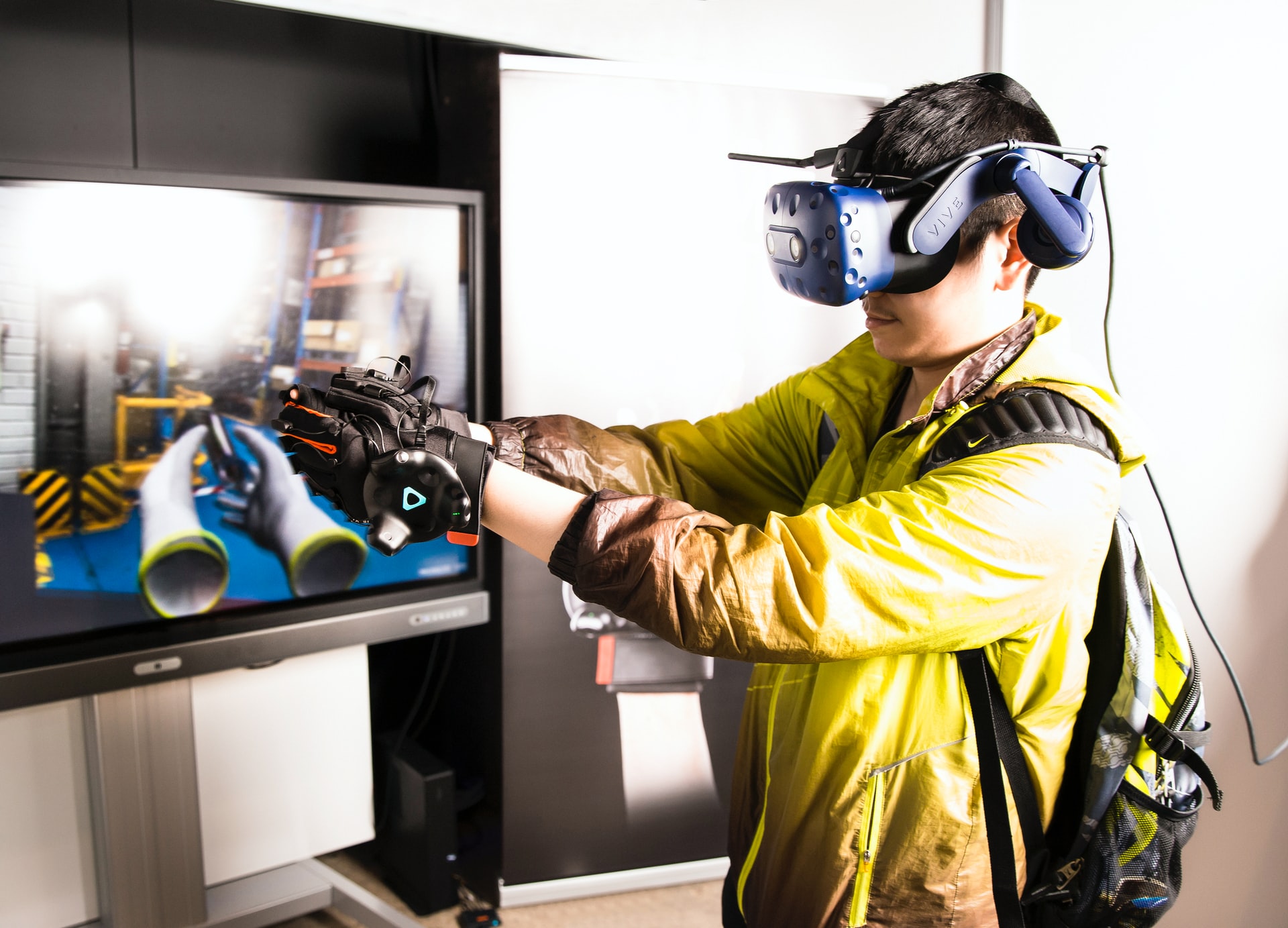RobotLAB Blog
Everything You Need To Know About Robotics in Businesses
Hard & Soft Skills That Can Improve Your Robotics Education
By Devin Partida
There has never been a better time to pursue a career in robotics. The industry continues to grow every year in both value and size. To compete today, aspiring robotics engineers and professionals must have a comprehensive skill set. These hard and soft skills will improve your robotics education and help set you up for success in the robotics industry
- 0 Comments
- Jun 22, 2022 10:00:00 AM
- Posted by Elad Inbar
- Topics: Robotics, EdTech, STEM, Artificial Intelligence, Robots,, AI, classroom, Inteligencia Artificial, school robots
Integrating Robotics into Health Sciences Courses
By Dan Matthews
 Image Source: www.unsplash.com
Image Source: www.unsplash.com
The marriage between health science and technology has been a long and happy one. However, that union has perhaps never been more important than it is today. Now, more than ever, state-of-the-art technologies, from bioengineering to artificial intelligence (AI), are playing a leading role in optimizing patient care, supporting healthcare providers, and expanding the scope of medical knowledge.
Among the most significant and promising of these technologies in the domain of health, sciences are robotics.
These technologies are not only increasingly being used in clinics, hospitals, and operating rooms, but also in health sciences classrooms at every level, including primary, secondary, and post-secondary education. This article explores the reasons why you should begin integrating robotics into your health sciences courses and identifies key strategies for doing so.
- 0 Comments
- Mar 14, 2022 10:00:00 AM
- Posted by Maria Alejandra Calcetero
- Topics: Robotics, EdTech, STEM, Education, code, 21st Century Classroom, Special Education, Artificial Intelligence, data literacy, Coding, Robots,, students, programming, Technology, VR, Realidad Virtual, STEMchat, Edchat, AI, k12, Virtual Reality, virtual learning, classroom, Inteligencia Artificial, Literacy, STEM literacy
Why Tech in Education Must Become More Accessible
By Dan Matthews

All children deserve the right to be set up for success, and one of the ways children are prepared to do their best in school is based on their access to technology. Technology is a great equalizer for all children, and all children can become better learners through the use of technology — especially children with disabilities. Despite this benefit of technology in the classroom, however, not all technology is accessible to all children. How can parents and educators ensure all students, no matter their ability, receive the best education they can?
- 0 Comments
- Feb 24, 2022 10:00:00 AM
- Posted by Maria Alejandra Calcetero
- Topics: Robotics, EdTech, STEM, Education, code, 21st Century Classroom, Special Education, Artificial Intelligence, data literacy, Coding, Robots,, students, programming, Technology, VR, Realidad Virtual, STEMchat, Edchat, AI, k12, Virtual Reality, virtual learning, classroom, Inteligencia Artificial, Literacy, STEM literacy
Fostering Healthy Coping Skills in STEM Education
By Dan Matthews

Solid STEM education is perhaps one of the best gifts parents and teachers can give students, equipping them today with the tools they will need to fill some of the most lucrative and in-demand jobs of tomorrow. But although STEM learning has so much to offer, many children, teens, and college students often avoid science and technology curricula due to the inherent rigor of such programs.
- 0 Comments
- Feb 16, 2022 10:00:00 AM
- Posted by Maria Alejandra Calcetero
- Topics: Robotics, EdTech, STEM, Education, code, 21st Century Classroom, Special Education, Artificial Intelligence, data literacy, Coding, Robots,, students, programming, Technology, VR, Realidad Virtual, STEMchat, Edchat, AI, k12, Virtual Reality, virtual learning, classroom, Inteligencia Artificial, Literacy, STEM literacy
The Necessity of Robotics Classes for Schools
By Dora Miller.
Robots are exciting to play tools for children and young adults. What if students learned how to make robots? Would robotics make it easy to handle STEM? Would the robots make other concepts easier to understand?

- 0 Comments
- Feb 9, 2022 10:00:00 AM
- Posted by Maria Alejandra Calcetero
- Topics: Robotics, EdTech, STEM, Education, code, 21st Century Classroom, Special Education, Artificial Intelligence, data literacy, Coding, Robots,, students, programming, Technology, VR, Realidad Virtual, STEMchat, Edchat, AI, k12, Virtual Reality, virtual learning, classroom, Inteligencia Artificial, Literacy, STEM literacy
What are the Advantages of VR in a Technical Classroom?
By Shannon Flynn

(Street Boro City Schools students in a class using VR)
While virtual reality (VR) is still a developing technology, many industries worldwide are looking into the potential benefits of using it in their operations. From manufacturing to retail, VR can be a transformative piece of tech that intertwines digital and physical realities.
Another sector investigating the advantages of VR is education. For most people, the concept of VR is complex and futuristic. However, it’s rapidly evolving, and it will likely be commonplace in daily life. Statista reports that the VR market size will increase to more than $12 billion by 2024.
Below is more information about VR, the benefits of using VR in a technical classroom, and details regarding VR Expeditions 2.0.
- 0 Comments
- Feb 8, 2022 10:00:00 AM
- Posted by Maria Alejandra Calcetero
- Topics: Robotics, EdTech, STEM, Education, code, 21st Century Classroom, Special Education, Artificial Intelligence, data literacy, Coding, Robots,, students, programming, Technology, VR, Realidad Virtual, STEMchat, Edchat, AI, k12, Virtual Reality, virtual learning, classroom, Inteligencia Artificial, Literacy, STEM literacy
VR Expeditions 2.0 was improved, Get your free upgrade today!⏫

We are excited to share with you a set of new features for VR Expeditions 2.0! and we can't wait for you to try them! Here are the most important ones that will make your and your students' VR experience much better!
- 0 Comments
- Jan 31, 2022 2:02:37 PM
- Posted by Maria Alejandra Calcetero
- Topics: Robotics, EdTech, STEM, Education, code, 21st Century Classroom, Special Education, Artificial Intelligence, data literacy, Coding, Robots,, students, programming, Technology, VR, Realidad Virtual, STEMchat, Edchat, AI, k12, Virtual Reality, virtual learning, classroom, Inteligencia Artificial, Literacy, STEM literacy
How EdTech Will Change The Future Of Learning In 2022
By Nancy Howard

With the rapid development of AI and tech as a whole, it’s no wonder that EdTech is becoming more common every day. Not only is it being used by educational institutions, but it’s also transitioning into our daily lives while businesses are starting to use it in their own employee training. Hence, here’s how EdTech will change the future of learning in 2022.
- 1 Comments
- Jan 27, 2022 10:15:00 AM
- Posted by Maria Alejandra Calcetero
- Topics: Robotics, EdTech, STEM, Education, code, 21st Century Classroom, Special Education, Artificial Intelligence, data literacy, Coding, Robots,, students, programming, Technology, VR, Realidad Virtual, STEMchat, Edchat, AI, k12, Virtual Reality, virtual learning, classroom, Inteligencia Artificial, Literacy, STEM literacy
Check these Educational STEM funding opportunities!
There are multitudes of STEM grants you can apply for. You should carefully consider all possible funding sources when searching for money to pay for your newest classroom innovation. Here are some STEM funding options.
- 0 Comments
- Jan 25, 2022 2:35:45 PM
- Posted by Maria Alejandra Calcetero
- Topics: Robotics, EdTech, STEM, Education, code, 21st Century Classroom, Special Education, Artificial Intelligence, data literacy, Coding, Robots,, students, programming, Technology, VR, Realidad Virtual, STEMchat, Edchat, AI, k12, Virtual Reality, virtual learning, classroom, Inteligencia Artificial, Literacy, STEM literacy
6 STEM Role Models for Girls
By Devin Partida
 Image source: https://unsplash.com/
Image source: https://unsplash.com/
There’s no denying that STEM fields lack diversity. For example, engineering and computer science, two of the most lucrative fields, remain male-dominated. According to the American Association of University Women (AAUW), 21% of engineering college students and 19% of computer science majors are female.
Many organizations, colleges, and universities are trying to address these gaps through various educational measures. This comes at a time when emerging technologies are being widely used across multiple industries, and more women are needed to pursue these fields to meet job demand.
One study found that role-model intervention had positive and significant effects on female respondents. A study from The Lyda Hill Foundation & The Geena Davis Institute on Gender and Media reports that more women, especially Asian-American and Latinx women, have entered STEM fields since the late 1990s, but the statistics remain low.
Here are some female STEM professionals that can serve as role models.
- 0 Comments
- Jan 20, 2022 10:00:00 AM
- Posted by Maria Alejandra Calcetero
- Topics: Robotics, EdTech, STEM, Education, code, 21st Century Classroom, Special Education, Artificial Intelligence, data literacy, Coding, Robots,, students, programming, Technology, VR, Realidad Virtual, STEMchat, Edchat, AI, k12, Virtual Reality, virtual learning, classroom, Inteligencia Artificial, Literacy, STEM literacy
Relevant Posts
- Augmented Reality: A Tool for Teaching Students Robot Programming
- Fostering Innovation Through Youth Education in STEM and EdTech
- How Parents Can Foster STEM Learning Beyond the Classroom
- How Robotics Cultivates a Deep Understanding of Mathematics in Students
- RobotLAB Receives EDTech Chronicle 2023 ‘BESTIE’ Award for Landmark Partnership with American Samoa Dept. of Education.
Subscribe to Email Updates
-
I Want To Learn MoreADDITIONAL INFORMATION


